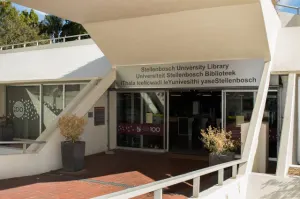Maintaining access to library resources in a COVID-19 world
15 septembre 2020
Par Library Connect

Librarians Emily Singley, Boston College, and Naomi Visser, Stellenbosch University, share best practices
The coronavirus pandemic has forced educational institutions around the globe to rethink the delivery of learning and research services. With campuses closed, and libraries inaccessible to faculty and students for much of this year, providing remote access and support has been critical. Institution librarians, in particular, have been quick to adapt to this shifting landscape. In this article, Emily Singley, Head of Library Systems at Boston College in the US, and Naomi Visser, Manager E-Resources at Stellenbosch University in South Africa, share the challenges they have faced and the lessons they have learned during this unique period.
Boston College - the Numbers
14,600 students, 84 percent of whom reside on campus
8 libraries, containing 3.2 million volumes and 42,000 subscribed resources

At Boston College, almost all students (84 percent) reside on campus, with most faculty choosing to work there too. Emily says: “We never dreamt of a situation where that would change. But, in mid-March, everyone was sent home and we stayed off-campus for the rest of the spring semester and summer.”
Like most academic libraries, the majority of Boston’s usage comprises electronic or digital resources. Emily explains: “Prior to the pandemic, about 80 percent of access to our e-resources was via direct IP, as I call it, and only 17 percent via proxy links; despite the fact that our librarians hammer into students the importance of starting from the library’s proxied links.”
A few years ago, a “really smart” e-resources librarian set up federated access, via Shibboleth, for a couple of the library’s e-resource vendors – including Elsevier. Emily recalls: “She did it more as an experiment than anything else. We didn't really expect it to get much use. And, prior to the pandemic, only around 3 percent of access was via Shibboleth.”

Boston College's COVID-19 journey
According to Emily, it was when the campus closed that things got “interesting.” Students and faculty were suddenly met by requests to log-in or buy/subscribe to content when they arrived at vendors’ platforms. “The easy access via direct IP, may have falsely given users the impression that most content was non-subscription, which set them up for frustration once they went off-campus,” Emily notes. In total, the library saw e-resource usage decline by 45 percent in March/April this year, compared to 2019 figures, although Emily notes that there may have been other factors at play, including reduced assignments and an extra week of vacation. The library also saw a spike in e-resource problem reports.
However, for Elsevier content, e-resource usage increased by 35 percent over that same period. Emily says: “Because federated access had been implemented, users could just log in to ScienceDirect using their normal campus institutional credentials. And here's the truly amazing thing: whereas federated access to Elsevier had previously accounted for around 3 percent of Elsevier usage, in March, when we were all at home, it rose to 50 percent - that's an increase of more than 4,000 percent.”
During lockdown, the library promoted a university website page explaining the remote access routes to students. But as Emily notes, “students who didn’t realize they needed a library subscription to access resources, wouldn’t have gone looking for that page.” Frontline librarians worked closely with faculty to embed proxied links on course pages, but that only helped people looking for course-related reading, not those doing individual research. Librarians also worked closely with educational technologists to optimize online courses.
Boston College library lessons learned
Think digital, not physical: “During the initial days of the pandemic, we focused too much on maintaining access to our physical collection (e.g. scanning and curbside pickups), because that's the most obvious impact when you close your doors.”
Communicate, communicate, communicate: “In hindsight, I think we were too quick to assume that students knew how to access digital content while off-campus. While we did have some communication on our website, we could have done more and done it better.”
Provide intuitive access: “We learned that IP access, even with an available VPN, doesn't make much sense to our modern users as it works differently to anything else on the web. Imagine, if every time you went to Twitter, you had to first go to your employer’s site and find some special access code, instead of just logging in. The way libraries operate doesn't really resonate with users.”
Arrange federated access, where possible: Emily and her colleagues spent the summer implementing federated access for all eligible vendors – that’s around 200 of the 600 publishers they do business with. “I'm very hopeful this will change our usage numbers for the better, in what is likely to be a remote fall for us. I'm also starting to teach librarians about the importance of federated access - our users are just a little ahead of us on this one.”
In fact, Emily is so passionate about federated access she is a member of the Seamless Access Project, which encourages publishers like Elsevier to adopt the same user experience across their platforms for federated access.
Stellenbosch University – the numbers
32,000+ students spread over 10 faculties on 5 campuses
In 2019, the libraries had 101 staff members, 1.2 million physical volumes, 798,393 printed books and 15,398 e-books.

When South Africa announced its national lockdown in mid-March, face-to-face teaching was banned, students were required to vacate campuses, and librarians and staff were told to work from home.
In South Africa, the academic year runs from February to November, and most universities, Stellenbosch included, extended their March recess, using the time to “train lecturers in online learning and assessment methodologies and prepare students for the new way of learning.” But, according to Naomi, they faced a few hurdles along the way.
The challenges Stellenbosch University encountered
Resource and infrastructure issues: Some of Stellenbosch’s students needed additional support from the university. Naomi recalls: “Around 1,700 loan laptops were delivered to students in need and there is still a monthly data package to help them access online learning material from their cellphones. A powerful new computer server was commissioned early in the second term, and software changes were made to accommodate the drastic increase in network traffic, especially to the Learning Management System.”
Replacement digital resources: According to Naomi, a major problem was sourcing and paying for digital versions of the library’s printed material. “Our materials budget was put under even more pressure. E-textbooks posed a huge challenge - fortunately, some publishers such as Elsevier and CUP made their textbooks freely available during lockdown.
EZproxy access: On campus, students and staff were used to seamless IP access and a fast and stable network. Although they were theoretically familiar with the EZproxy off-campus access, there were still those who didn’t “listen, or remember what they were told,” says Naomi. There were also issues with passwords that had expired or were not synchronized across applications, and incomplete roles in the university’s admin system. She says: “Those issues all had to be fixed.” A small number of databases were not EZproxy-compatible, so Naomi and colleagues had to contact the publishers directly. “Fortunately, they were all very supportive and quickly provided alternative arrangements.”
Connectivity issues: It wasn’t all smooth sailing with the wi-fi, fiber, or mobile hotspots provided by students’ service providers, while some students on farms and in rural areas faced slow and unstable internet connections.
Copyright support: In an effort to help students save data, Stellenbosch’s lecturers often provide links to PDF copies of articles and book chapters or provide YouTube videos as MP4s. “They needed to know what they were allowed to share and where to get any necessary permissions. The faculty librarians had their work cut out for them.”
A need for library flexibility: Faculty librarians had to keep in mind the abnormal hours and circumstances of lecturers and postgraduate students. “We needed to be extra supportive, even to the point of spoon-feeding.” Some library staff were among those challenged by a lack of infrastructure, connectivity and workspace at home, which meant that those still working had more to do. And they had to learn new skills quickly; for example, how to navigate MS Teams and online workshops. Naomi adds: “Most of all, everyone had to adapt to the individual challenges of our clients and colleagues.”
Despite these problems, the library recorded an average increase of 71 percent in the usage of content supplied by four of its key vendors during the first three months of the lockdown, compared to the same three months in 2019. Naomi says: “I think students and researchers had nothing else to do during lockdown, so they studied and did research. I also like to think that the increase is due to the effort we put into communicating with users.”
Stellenbosch's key to success - keeping users informed
As soon as lockdown and remote online learning became a possibility, the library and information service prepared new workflows, which were communicated to users via multiple channels. An email with detailed information was distributed via the university’s distribution lists. Announcements on the library website were updated as and when needed, “and, of course, social media was used extensively. Some Instagram accounts were added to the existing Facebook and Twitter accounts, and some faculty librarians started WhatsApp groups to communicate with their students and lecturers.”
Naomi adds: “Faculty librarians also remained in contact with their faculties via email and used MS Teams for individual meetings. Ask a Librarian, the online reference service, continued to be available and there was a marked increase in the number of questions asked compared to the same period in 2019.
An important communication channel for the library is its LibGuides. “We created a special COVID-19 LibGuide with tabs for e-books, e-journals, COVID-19 research, and additional resources, such as tools for finding and organizing course content, articles on online learning, and tips to share with students.” During the first month of lockdown, total views for the LibGuide on finding, accessing and using information effectively, rose by 79 percent compared to the same period in 2019.
The Library also organizes classroom-based training sessions - “Smart Researcher Workshops”. These have moved online since the pandemic, and Naomi has been amazed to see attendance rates nearly double. “The trend is continuing in the second semester, with even better attendance and higher registrations. We have also introduced new topics; for example, one on off-campus access to e-resources during lockdown.”
At the time of writing, South Africa remained in partial lockdown, with only 33 percent of students back on campus. “Most of the lectures will be delivered online for the remainder of the academic year, but we are prepared,” says Naomi.
Want to know more?
The authors took part in the recent Library Connect webinar Librarian best practices for uninterrupted access to research and education. Access the recorded version of the webinar by clicking on this link S’ouvre dans une nouvelle fenêtre.
